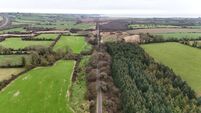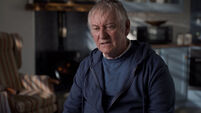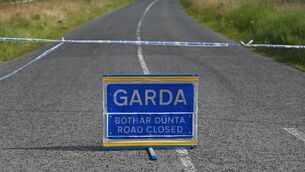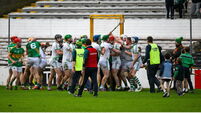The Freemasons in Cork have broken their silence on the contentious €1 Bishop Lucey Park land disposal deal to insist that it will lead to benefits for the city in the long term.
One of the key figures of the Provincial Grand Lodge of Munster says there was nothing shady or secretive about the process, and laughs off suggestions that Freemasons exercised some kind of mysterious influence over those in authority to get the disposal deal over the line.
“Rumours of our powers have been greatly exaggerated,” the provincial grand librarian and archivist, David J Butler, quips.
“The city councillors are the peoples’ representatives and the fact that they voted 18-7 in favour of the land disposal was more than positive.”

Mr Butler was among a group of Freemasons who met in the unique Masonic hall on Tuckey St — the historic building listed in the National Inventory of Architectural Heritage (NIAH) as the first Lodge of Ireland and which overlooks Bishop Lucey Park to the rear — for the group’s regular weekly coffee morning last Friday, to discuss the fallout from the disposal and their plans to increase public access to the building.
“The idea that we operate in secret is laughable really,” Mr Butler says. “Everyone knows the hall and where we meet. Anyone who’s interested can come join us for these regular Friday coffee mornings. And the building is open for Culture Night and Heritage Week and for other civic and cultural events.
“We plan to build our extension in lock-step with the redevelopment of Bishop Lucey Park. And when it is done, we plan to open the building to the public more. And it could be more than 20 hours a month, over time.”
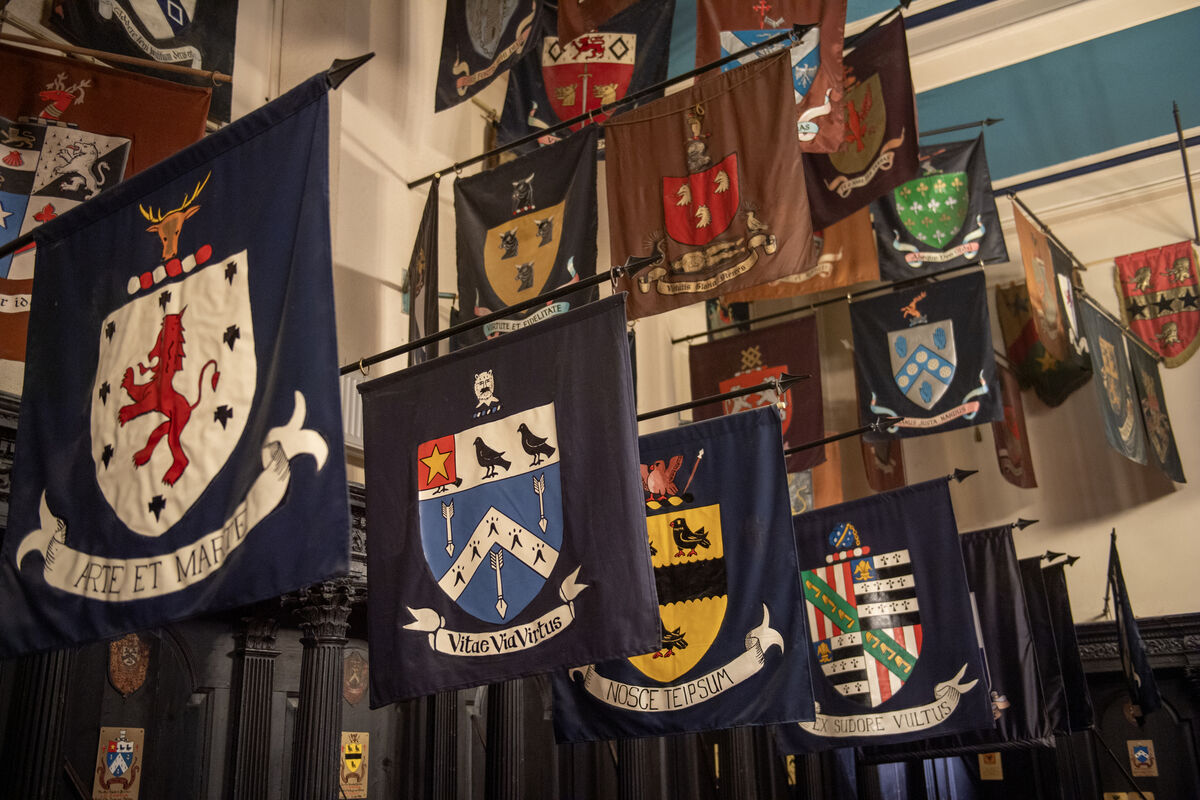
The disposal by the city of almost 54sqm of Bishop Lucey Park to the Freemasons was one of the city’s most contentious land disposals since controversy flared over the disposal of public land near Páirc Uí Chaoimh to the GAA.
But this one had extra spice — a beloved park, the city centre’s only bit of green space, the felling of trees, a material contravention of the city’s development plan, a symbolic €1 price tag, the relocation of a Chernobyl memorial, and the male-only Freemasons adding a whiff of mystery and intrigue and, for some, a dose of misogyny.
Critics described the disposal as a shady deal for a glorified boy’s club, that the city was selling out and didn’t care about the park or those who use it, that it was a tone-deaf act of environmental vandalism that would set a dangerous precedent against the backdrop of a climate crisis.
Many felt that a way should have been found to provide a new fire stairs and lifts within the footprint of the historic building.
But the documents on the planning file, and discussions held in public, show that the disposal followed a long process that has its roots in a series of informal talks between City Hall and the Freemasons after the group received a Lord Mayor’s Civic Award in 2013 for their contribution to city historical life and culture.

It was a shared view that the Freemasons’ unique hall could be better used for cultural events and by the public but that a passenger lift serving all floors, and modern fire evacuation facilities were needed.
And so began a long and detailed process, involving JCA Architects, to find a suitable design solution while retaining the historic fabric and integrity of the NIAH-listed building’s
interior, which includes joinery from St Fin Barre’s Cathedral which was installed in the Masonic hall in the 1860s.
A decision was made that a four-storey extension to accommodate the fire stairs and lift could only be built to the rear of the property on a section of the park — on a parcel of land the Freemasons didn’t own, and on land that would have to be rezoned. Not exactly the easiest route for a development project.
Because they didn’t own the land, the Freemasons sought, and then secured, written consent from the council in April 2021 to lodge a planning application, and a pre-planning meeting took place via Teams on August 9, 2021, where the architects set out their proposal.
At this meeting, the council clearly spelled out the areas of concern — building in a park, on land zoned as public open space, and the felling of trees — and the architects were told that they would have to justify from a structural and conservation point of view the location of the extension in the park, and explain how it would integrate with the new design for the park.

They were told that, because this was the first application of its kind to encroach on the park, the Freemasons would have to provide details of their cultural, outreach, and charitable activities, and explain how the extension could be a positive development for the park and the city.
A detailed planning application was lodged in February 2022, complete with a raft of engineering and architectural reports, dealing with all those matters.
The application was assessed by three council planners, one of whom prepared an 18-page report, and by the council’s heritage, architectural, conservation and parks experts, who all agreed that planning should be granted, with conditions.
The conservation officer’s report said that, in terms of conservation best practice, locating the extension on the blank rear elevation was considered to have a minimal visual and material effect on the historic structure, and that its “understated design” would be further shielded by a line of birch trees.
The architectural conservation officer conducted an internal inspection of the building to assess the impact of the proposed development on the intact 19th century interior and reported: “The proposal is well considered as a limited intervention.”

But they said that the design of certain openings from the extension into the building, in particular into the symbolic lodge room and onto its main staircase, required consideration “so as not to undermine the character of this historic NIAH structure and its intact interior”.
Mr Butler says this key point is why the works could not be delivered within the footprint of the building.
The application was recommended for approval but, given the zoning of the parcel of land, it would require a vote by city councillors on a material contravention of the city development plan.
That vote, which required a two-thirds majority, followed a lengthy debate in public about the loss of public park space and tree felling, and it was passed with one vote to spare.
The following month, conditional planning was granted.
UCC plant scientist Eoin Lettice described the vote to allow a “private organisation” to build on public green space during a climate emergency and a biodiversity crisis, as “a completely retrograde step”, and one which sets “an unwelcome precedent”.
“The truth is we cannot afford to lose any green space in our city centre,” he said.
He spoke out again ahead of last Monday’s disposal vote while others rowed in, including dereliction campaigners Frank O’Connor and Jude Sherry.
In a tweet, Mr O’Connor said the contempt that the council shows for the people who live in Cork City is “off the scale”.
“Selling off some of our only city centre park for €1 to the members only Provincial Grand Lodge of Munster (Freemasons Hall) is whole new level of fu*k you. If this goes ahead then what next,” he said.
Ms Sherry said: “Any councillor that votes for this does not represent the citizens of this city.”
Disposals come before almost every council meeting. They are all discussed previously at the council’s finance committee and come to full council for approval.
The Freemasons’ disposal was one of three for approval last Monday, sandwiched between the disposal of the council’s freehold interest in two units at Hollymount Industrial Estate to a company, and the disposal of two units in the Grand Parade Market to Cork Rooftop Farm Ltd by way of lease for three years at a set annual rent.
The park disposal notice stated that the council proposed to dispose of any right, title, estate, or interest it may have in a 53.6sqm parcel of land to the rear of the Masonic Hall to Craft Properties Ltd — the legal entity for The Provincial Grand Lodge of Munster Freemasons, for €1 plus costs of €1,500 plus VAT.
In a report, councillors were told that the council had examined the Masonic hall and was satisfied that the NIAH-listed property could not be remodelled to provide disabled and fire access and egress within the existing footprint without significantly changing the character of its historic interior.
They were told that the council does not have “good and marketable title over the land parcel required” but does have “possessory rights”, which meant that land did not possess a monetary value, so instead, the onus was being put on the Freemasons to make access to the building available to public groups for up to 20 hours a month.
It led to a near 40-minute debate, again in public, during which the Green Party uniting against the disposal.

Solidarity councillor Brian McCarthy said building on the park should never have been put forward as a solution to the building’s access and fire safety issues and he took a swipe at the Freemasons.
“It is an elitist, sexist private members club that provides no useful function,” he said. “This disposal is so that a glorified boys club can have a bigger club house — the city does not benefit.”
Labour councillor John Maher described the disposal as a bad deal for the council while Rabharta Glas councillor Lorna Bogue said the city was essentially giving public land to a private institution that won’t allow 50% of the population to become members.
“This sends out the wrong message in terms of how we use public space and what organisation we give it to,” she said.
However, SF councillor Mick Nugent said, at its core, this was about securing universal access to building that is not accessible to people with disabilities.
FG councillor Des Cahill pointed out that the disposal represents just 1% of the overall park space while Independent councillor Paudie Dineen said the key issue here was about fire safety and saving lives, and FG councillor Damian Boylan pointed to the Freemasons’ charitable work and said, in 2022, they raised some €4.5m for various groups, including Médecins sans Frontières, the RNLI, and Simon.
FF’s Terry Shannon said the council disposes of lands to various groups regularly because it’s the right thing to do and he said this issue had been thrashed out during the material contravention vote last year.
He defended the Freemasons’ right to their men-only membership rule, and warned that if that argument was used against them, the Men’s Sheds movement could face similar criticism in future if it ever sought funding or a land disposal for a project.
And he suggested that if this disposal had been to a group other than the Freemasons, there would not have been as much controversy.
FF councillor Mary Rose Desmond also supported the disposal, and reminded councillors that while the Freemasons are a male-only membership group, woman are allowed access to the building.
“You can’t stand still. You have to look at things in the round and in the greater good and there is no way this parcel of land is as good a green space as it could or should be,” she said.
Before councillors voted, they were told that the extension will involve the removal of 15 semi-mature birch trees — six of which are in poor condition.
They had been planted as saplings in 1993 to screen the blank rear elevation of the building.
The planning permission conditioned the planting of 15 replacement semi-mature 15- to 18-year-old birch trees immediately north of the extension.
A report from the city’s head of parks, Liam Casey, said the opportunity to access the Freemasons’ hall from the park will provide opportunities for additional visitors to the park, and he added that many active travel projects (greenways, cycleways, bus connects) involve the felling of mature trees.
“While this is not desirable, it is unavoidable to enable these essential projects to be delivered in the context of provision of active travel and universal access,” he said.
“It is equally important to note that many new build and extensions in colleges and schools in the city involve the felling of mature trees.
“Again, while not desirable, it is unavoidable in the context of providing these essential buildings. Replacement planting to compensate for the loss of these trees is always a condition of these projects.”
Last Monday's council meeting
A vote was called, and 18 councillors approved the disposal, with councillors Dan Boyle, Oliver Moran, Colette Finn, Lorna Bogue, Brian McCarthy, John Maher, and Ted Tynan voting against.
None of the male councillors in attendance confirmed membership of the Freemasons. They are not required by law to declare an interest unless they stand to benefit personally from any particularly vote.
The absence of six councillors from the vote sparked speculation of Freemason involvement but it has been established that one councillor was absent, one arrived late for the vote, two were on holiday, one was absent on medical grounds, and one left early to attend a removal.
In a tweet afterwards, Ms Sherry said the seven who voted against “stood up for us”.
“Thank you all for putting people and planet over secret society,” she said.
For the 18 councillors who voted in favour, it was all about striking a balance — helping to deliver universal access and improve fire safety to an historic building, on a street where one building of similar age has been braced following structural issues, with conditions built in to the disposal to secure increased public access to what is an intriguing and fascinating piece of the city’s history and heritage.
Aidan Coakley, a Freemason since 2006, urged those who are still opposed to the disposal to visit the hall, and talk to the Freemasons.
“Come in on a Friday morning, meet us for coffee, talk to us, see what we’ve done in history, see where we’re going, and we will gladly say hello,” he said.
Read More

Unlimited access. Half the price.
Try unlimited access from only €1.50 a week
Already a subscriber? Sign in
CONNECT WITH US TODAY
Be the first to know the latest news and updates






